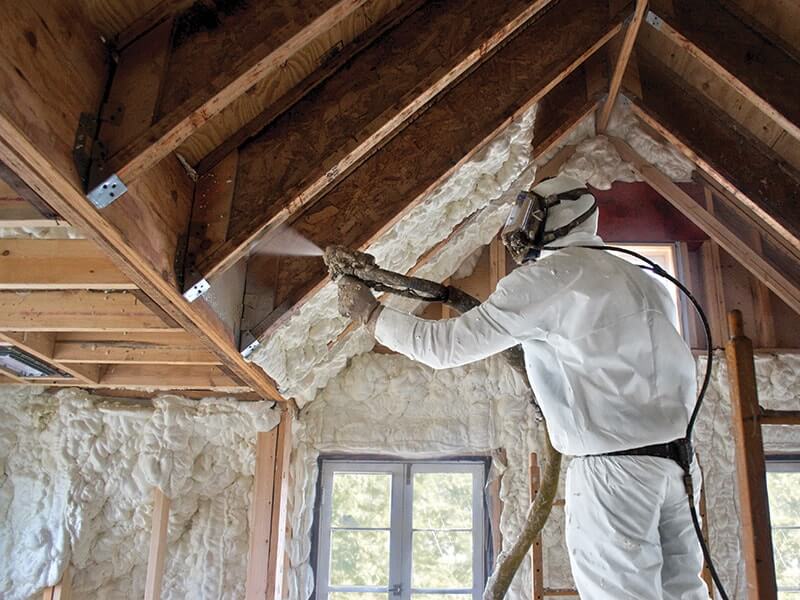
Polyurethane foam is a versatile and efficient material widely used in building insulation. It provides exceptional thermal resistance, moisture control, and energy efficiency, making it a go-to solution for both residential and commercial construction projects. This article explores the various applications of polyurethane foam in building insulation and its benefits.
Polyurethane foam is commonly used for insulating walls due to its ability to create an airtight seal and prevent heat loss. It can be applied in several forms:
Cavity Walls: The foam is injected into the cavities between the inner and outer walls, reducing thermal bridging and improving overall energy efficiency.
Exterior Walls: Spray polyurethane foam (SPF) is often applied directly onto the exterior wall surfaces to form a continuous insulation layer, which also acts as a weather barrier.
Interior Walls: Used to reduce heat transfer and improve soundproofing within the building.
Polyurethane foam is an excellent material for roof insulation, especially for flat and low-slope roofs.
Spray-Applied Foam: Creates a seamless layer that minimizes air leakage and offers superior waterproofing.
Pre-Insulated Panels: Rigid polyurethane foam panels are used in roofing systems to enhance thermal performance and structural strength.
The high R-value of polyurethane foam ensures effective heat resistance, keeping interiors cool in summer and warm in winter.
Floor insulation with polyurethane foam is essential for reducing heat loss through the building's foundation and improving indoor comfort.
Underfloor Insulation: Rigid foam boards are installed beneath floor surfaces to prevent heat transfer.
Concrete Slabs: Spray foam can be applied directly under concrete slabs to act as a vapor barrier and improve thermal efficiency.
Polyurethane foam is extensively used to insulate and seal gaps around doors and windows, ensuring airtightness and minimizing drafts.
Foam Sealants: Expanding polyurethane foam sealants fill small gaps and crevices, preventing air infiltration and improving energy efficiency.
Thermal Breaks: In metal frames, rigid polyurethane foam acts as a thermal break, reducing heat transfer and condensation.
Polyurethane foam is used to enhance the efficiency of HVAC (Heating, Ventilation, and Air Conditioning) systems.
Duct Insulation: Spray foam is applied to HVAC ducts to prevent heat loss or gain and reduce energy consumption.
Pipe Insulation: Rigid foam is used to insulate hot and cold water pipes, improving energy efficiency and preventing condensation.
Polyurethane foam’s excellent thermal insulation properties make it ideal for cold storage facilities and refrigerated buildings.
Wall and Roof Panels: Pre-insulated polyurethane foam panels are used to maintain consistent internal temperatures.
Refrigeration Equipment: Foam is used in the insulation of refrigeration units to enhance energy efficiency.
In addition to thermal insulation, polyurethane foam also provides soundproofing benefits.
Wall and Ceiling Applications: Spray foam reduces noise transmission between rooms.
Flooring Systems: Rigid foam boards under floors dampen vibrations and reduce noise from foot traffic.
Polyurethane foam offers several advantages, including:
High Thermal Resistance: Its high R-value per inch ensures effective insulation with minimal material.
Air and Moisture Barrier: Creates an airtight seal that prevents drafts and moisture infiltration.
Durability: Resistant to compression, water, and mold, ensuring long-term performance.
Energy Efficiency: Reduces heating and cooling costs by maintaining consistent indoor temperatures.
Versatility: Can be customized to suit various insulation needs and building types.
Polyurethane foam plays a crucial role in building insulation, offering unparalleled thermal resistance, energy savings, and durability. From walls and roofs to floors and HVAC systems, its applications are diverse and effective. By incorporating polyurethane foam insulation, builders and homeowners can achieve enhanced energy efficiency, improved indoor comfort, and reduced environmental impact.